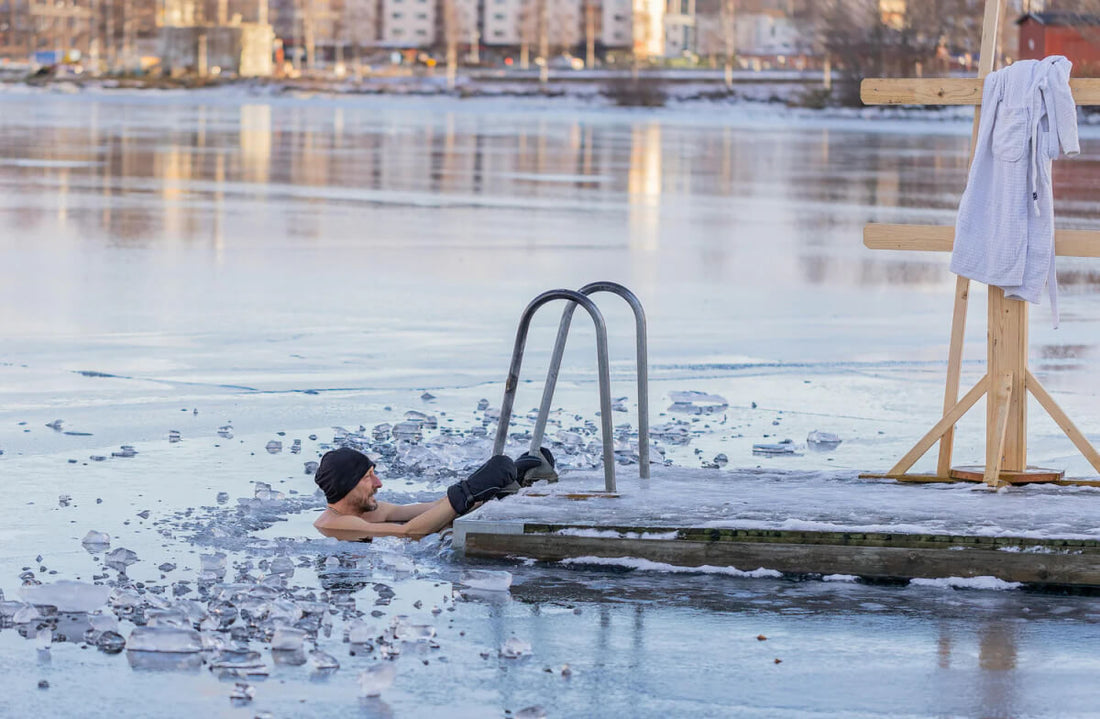Master Winter Cold Plunging: Protect Your DIY Cold Plunge in Winter
Discover the fascinating science behind winter cold plunging and learn how to protect your DIY setup during the coldest months. From understanding the physics of water movement to mastering advanced freeze prevention techniques, this comprehensive guide reveals why winter might actually be the perfect season for cold plunging.

The brisk winter air might have you wondering whether it’s time to pack away your DIY cold plunge until spring. However, winter presents a unique opportunity to elevate your cold plunge practice, offering benefits not available during warmer months. In this guide, we’ll explore the cold plunge benefits, delve into the science behind cold water therapy, and provide practical tips for maintaining your cold plunge tub during the colder season.
What Are the Benefits of Winter Cold Plunging?
Winter cold plunging amplifies the benefits of regular cold water therapy. The combination of freezing temperatures and water immersion can:
- Boost circulation and improve recovery time for muscles
- Enhance mental clarity and reduce stress by stimulating endorphin release
- Strengthen your immune system through cold exposure, which activates brown fat and increases metabolic rate
- Provide an invigorating start or finish to your day, particularly during the darker months when energy levels often dip
Understanding the Science of Cold Water and Heat Loss in Your Cold Plunge Tub
To properly care for your cold plunge during winter, it’s essential to understand how water gains and loses heat. Four primary mechanisms contribute to temperature changes:
- Evaporative Cooling: As water molecules at the surface evaporate, they take energy from the remaining water, lowering the overall temperature. In winter, dry air and wind can accelerate this process. Studies show that uncovered water bodies can lose 1-2°F per hour through evaporation.
- Radiative Cooling: Your cold plunge loses heat through electromagnetic radiation, particularly during clear, cold nights. Radiative cooling accounts for up to 25% of total heat loss in outdoor water features.
- Conductive Heat Transfer: This occurs when your cold plunge tub comes into contact with a colder surface, such as the ground or air.
- Convective Heat Transfer: Heat is lost as air moves across the water’s surface, carrying warmth away.
Practical Tips to Prevent Heat Loss
Use Insulated Covers
One of the simplest ways to maintain your cold plunge’s temperature is by using an insulated cover. Opt for a marine-grade insulated stock tank cover to minimize evaporative cooling and radiative cooling. These covers conserve energy, protect your plunge from debris, and shield it from harsh winter weather.
Optimize Placement
Position your cold plunge tub in a sheltered area, away from direct wind exposure. If possible, place it on a foam, insulated base or even a large piece of cardboard to reduce heat loss through conduction.
The Role of Water Movement in DIY Cold Plunges
Water movement is critical for maintaining consistent temperatures and preventing ice formation. Here’s why:
Preventing Thermal Stratification
Still water tends to form layers of different temperatures. Thermal stratification occurs because colder water, being denser, sinks to the bottom, leaving warmer water at the top.
The Physics of Circulation
- Temperature Uniformity: Moving water ensures consistent temperatures throughout the plunge via forced convection, which is more effective than natural convection.
- Prevention of Ice Formation: Circulating water requires more energy to freeze, creating a kinetic barrier that protects your plunge from freezing damage.
- Enhanced Sanitization: Circulation helps distribute sanitizing agents like ozone and prevents stagnant water, reducing bacterial growth by up to 60%.
Best Tools for Water Movement
Use a Cold Plunge Water Pump
A reliable water pump, such as a Danner cold plunge pump, is essential for maintaining continuous water movement. These pumps can be submerged in your tub or integrated into external plumbing for optimal circulation. Continuous water movement ensures your cold plunge remains usable and safe throughout the winter.
How to Winterize Your DIY Cold Plunge Tub
Regular Maintenance
Keep your cold plunge clean by removing debris and sanitizing the water regularly. Use ozone or other sanitation treatments to maintain sanitized water, especially when the plunge is exposed to the elements.
Insulation Upgrades
Consider adding insulation to the walls and base of your tub. Foam panels or thermal wraps can significantly reduce heat loss and improve energy efficiency.
Monitor Temperature
Invest in a water thermometer to monitor your plunge’s temperature closely. Maintaining an optimal range ensures you gain the maximum benefits of cold therapy at home while avoiding freezing damage.
Safety Measures
Always prioritize safety when practicing cold water therapy. Avoid prolonged exposure to extremely low temperatures and consult a healthcare professional if you have underlying health conditions.
Addressing Common Winter Cold Plunge Questions
What Type of Insulation Works Best?
Marine-grade materials or foam insulation panels and hose wrap are highly effective in protecting your plunge from heat loss and external damage. Also consider protecting your cold plunge filter housing with our full line of insulated filter housing ChillGuards.
How Can I Prevent Ice Formation?
Use a water pump to maintain circulation and add an insulated cover to maintain water temp. For extremely cold climates, consider a submersible tank heater to further help maintain water temp in your ice bath.
Can Cold Plunge Therapy Improve Health in Winter?
Yes! Cold plunging in winter not only improves circulation and recovery but also helps combat seasonal fatigue and enhances mental well-being. You get the added benefit of it being cold outside and thus taking longer to warm up. This can have added benefits and amplify the after effects of cold plunging.
Conclusion: The Science of Success
Winter is not a barrier to your DIY cold plunge routine—it’s an opportunity to bolster it. By understanding the principles of heat transfer and water movement, you can protect your investment and enjoy the unique cold plunge benefits winter has to offer. Equip yourself with the right tools, such as insulated covers and water pumps, to maintain your plunge and reap the benefits of cold water therapy all season long.
Remember, always prioritize safety and consult with healthcare professionals before starting any new wellness practice. With proper care and preparation, your cold plunge can be an invigorating and transformative part of your winter routine.

